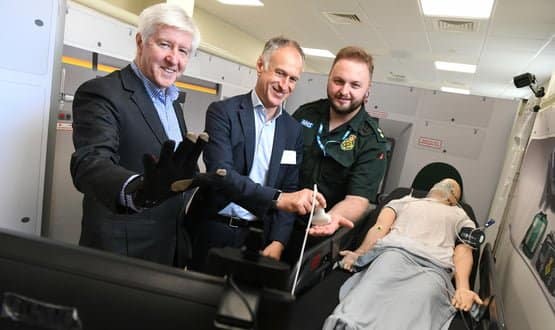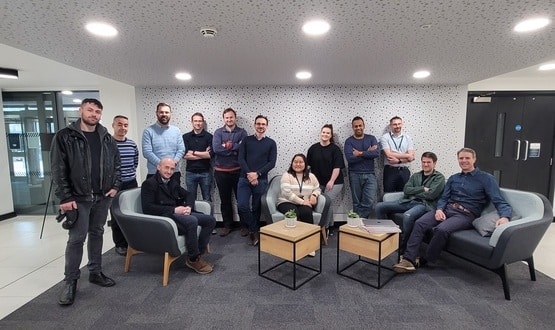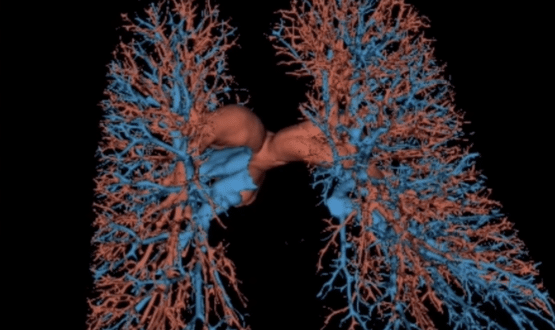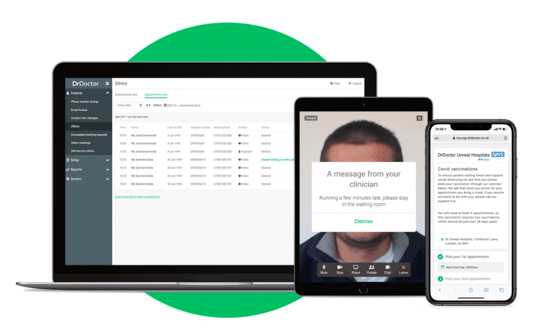5G robotic glove could diagnose patients before they reach A&E
- 27 June 2019

A robotic glove powered by 5G could help diagnose patients still on their way to hospital in a UK first.
University Hospitals Birmingham NHS Foundation Trust (UHB), BT and WM5G have teamed up to deliver new technologies for front-line staff to diagnose patients quicker, including enabling remote diagnostics performed by paramedics.
5G capabilities would allow paramedics to be connected to clinicians at a hospital, who could help them diagnose and treat patients before they’ve reached A&E.
In a demonstration earlier this month, paramedics were able to perform an ultrasound using a robotic, or haptic, glove. Clinicians can send control signals over the 5G network using a control stick at the hospital.
The glove creates small vibrations that direct the paramedic’s hand to where the clinician wants to sensor to be moved to, providing them real-time access to ultrasound images.
A camera is also live in the ambulance, which transmits in high definition a view of the inside of the ambulance covering the patient and paramedic to a second screen located on the clinician’s workstation.
Tim Jones, chief innovation officer at UHB, said: “We are immensely excited about the potential of 5G to support transformation in healthcare. As a Global Digital Exemplar (GDE), we are always looking into new technologies and how we can use them to improve patient care.
“Our clinicians will in the future be able to deliver holistic specialist advice in real time, potentially forming virtual multi-disciplinary teams to provide the best patient care using intelligent IT links.
“Information would be accessible at the point of need, ensuring informed decision making leading to improved patient safety, quality of care and patient/clinician experience.”
As well as speeding up diagnosis, the initiative could potentially reduce the number of ambulance and hospital visits, freeing up resources.
Dr Omkar Chana, programme director at WM5G, added: “We are in a unique position where we are beginning to understand how developments in technology can be leveraged to change and improve the way in which some healthcare services are delivered.
“High definition clinical imaging is one example that lends itself well to digital transformation owing to the large amounts of data transferred in a short space of time.”
In the UK several companies are looking into the viability of 5G technology in the healthcare sector, including Internet of Things (IoT) company Pangea Connected who are working with Kingston University in London to develop a new 5G-enabled video streaming service that allows A&E doctors to triage patients before they arrive at hospital.
But experts have previously warned that poorly regulated 5G could pose “potentially catastrophic cyber threats” amid concerns tech giants like Huawei could pose a security threat.





1 Comments
Slightly misleading heading I think the clinicians will be doing the diagnosis. The glove is doing some guiding under human control. I would be really i surprised if this is going to be cost effective in this type of situation. It could potentially have a use in rural and remote medicine.
Comments are closed.